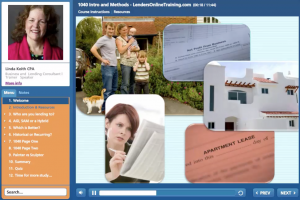As I write this post, Donald Trump and Hilary Clinton are in the last few weeks of the presidential campaign. This post is not pro-Trump or pro-Clinton. It is pro-truth.
I train lenders on tax return analysis with an area of expertise in lending to complex borrowers. Donald certainly qualifies for that moniker, as does Hilary. The alarm I am raising is the use of words and how they lead to bias, in politics and in lending.
Donald Trumps choice to declare a loss in the 1990’s which triggered a carryover to later years and suppressed taxes has been labeled ‘tax avoidance’ by his critics.
Full disclosure: I do not have any specific knowledge of Trump’s tax situation. For the purpose of this post, I am assuming it was a valid tax treatment of his loss.
Lender (and voter) bias
When you think of bias, you may quickly think of the more acknowledged ones: ethnic, religious, and gender to name a few. Lenders often work hard to recognize they may have a bias and to lend based on the right factors: ability to pay, strength of collateral, and willingness to pay.
The bias many in lending are not paying enough attention to is confirmation bias. I would argue this is also true of voters this go round.
Confirmation bias
It is scientifically proven that when you have an opinion, your brain actively seeks out information to support that opinion, and actively disregards or discredits information that does not support it. If you want references to the studies, please see the references in the Wikipedia article on Confirmation Bias.
The root of confirmation bias is heuristic thinking, which is a valuable tool. It is the way we make quick judgements when needed and we do this every day, all day. From choosing quickly from a menu to picking a good parking spot, shortcuts to the ‘best’ answer make life easier. But this same tool can be dangerous when applied to politics and to lending.
‘Avoidance’ sounds dishonest
I warn lenders in my tax return analysis training to be very careful of their assumptions. Jumping to a conclusion too early in the process can trigger confirmation bias and result in the wrong loan decision. When a lender sees a massive loss carryover they might think ‘this person is avoiding taxes’. But they could as easily think ‘this person is allowed to carryover the loss to reduce future taxes’.
Tax avoidance sounds like bad behavior. Taking allowed loss carryovers sounds like following the rules.
Watch your language!
Your mother was right. Be careful what you say and think. In this case, it is because some words are negative and will lead you into confirmation bias. Once it is in play, it is hard to combat. You likely do not even realize you have slipped.
I suggest lenders, when noticing a red flag, think to themselves: “That’s interesting. I need to know more about that.” Once you find out more, that red flag may turn into a green light.
More for lenders
Two of the modules in Lenders Online Training are on point:
Green Legos, Six Ns and a Map to Tax Return Analysis covers all types of adjustments necessary to get from Taxable Income to Recurring Cash Flow to pay debt and the owners. It is also in the ‘free’ modules all have access to. (Access free modules here.)
 Capital Gains: 1040 Schedule D and Form 4797 covers how to spot carryovers on a Schedule D and why you don’t count them when you do.
Capital Gains: 1040 Schedule D and Form 4797 covers how to spot carryovers on a Schedule D and why you don’t count them when you do.
See the full list and previews of online modules covering Tax Return and Financial Statement Analysis here.

